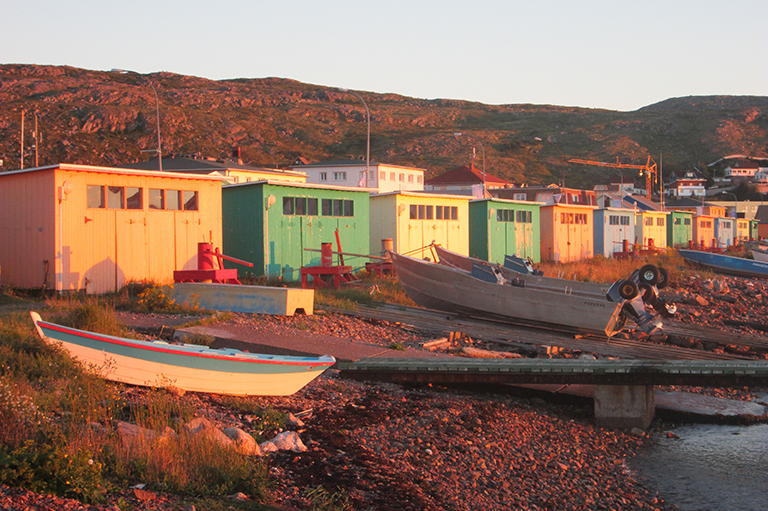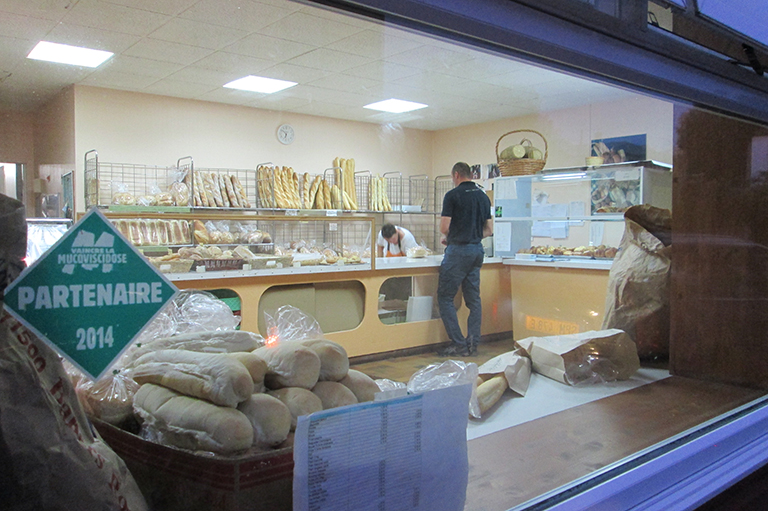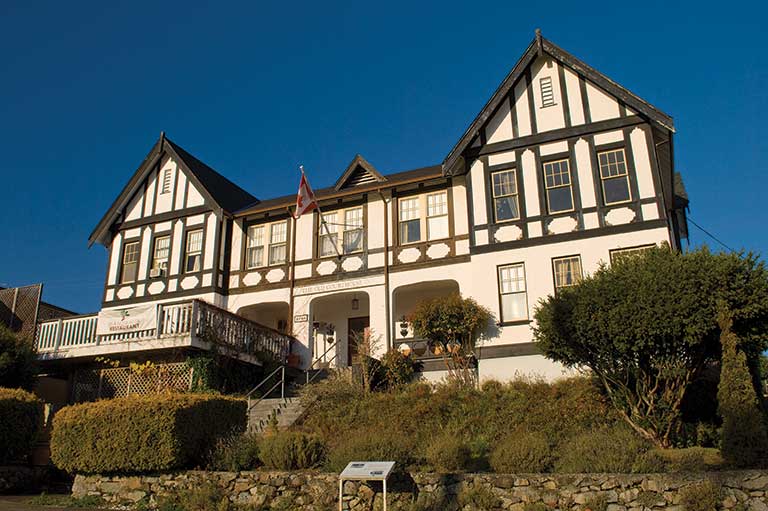Discover a wealth of interesting, entertaining and informative stories in each issue, delivered to you six times per year.
France on Canada’s doorstep
-
 Morning light catches boathouses.Nancy Payne
Morning light catches boathouses.Nancy Payne -
 St-Pierre-Miquelon is home to several outstanding bakeries and patisseries.Nancy Payne
St-Pierre-Miquelon is home to several outstanding bakeries and patisseries.Nancy Payne -
 The tourist office (green building) is steps from the harbour.Nancy Payne
The tourist office (green building) is steps from the harbour.Nancy Payne -
 War memorial in the village of Miquelon.Nancy Payne
War memorial in the village of Miquelon.Nancy Payne -
 Sunrise on the village of St-Pierre.Nancy Payne
Sunrise on the village of St-Pierre.Nancy Payne
We are just an hour west of Newfoundland’s Burin Peninsula, looking out on a harbour surrounded by houses and shops whose bright colours have been dulled by the gloom and rain. We’re feeling snug inside the cozy dining room of l’hôtel Robert, with its orange walls and candlelight. My 15-year-old son looks up from his dinner, an expression of happy awe on his face. “This is the best meal I’ve ever eaten.” It’s not surprising, really. After all, we are in France.
Although it requires several days out of a visit to the island of Newfoundland, a trip to St-Pierre-Miquelon should be part of your plans. Especially popular with Québécois and other francophone Canadians, the fascinating collectivité territoriale (overseas territorial collectivity) offers a truly memorable experience that is part Newfoundland, mostly France, and all unique.
The brightly painted houses in contrasting yellow, lilac, crimson, pink, chartreuse, and sky blue are a lot like those in Fortune, NL, the departure point for the ferry to Saint-Pierre. The omnipresent rock also signals that Newfoundland isn’t far away. And the steep, confusing streets are also very much like the closest Canadian province, which makes sense given their shared heritage of fishing, which required lanes and walkways rather than broad streets for carts.
Of course, the French accents, the French flag and the euro make it pretty clear that you’re no longer in Canada. The rhythms are European, too; everything closes from about noon to 2:00 pm for a civilized lunch, and some businesses close over dinner but reopen in the evening. Many shops close on Saturday afternoon and everything’s shut on Sunday. The preponderance of Citroëns, Renaults, and Peugeots whipping along narrow streets evokes France, as does the wide range of affordable wines.
The enticing aromas of the bakeries and patisseries may be the most glorious signal of the archipelago’s heritage, though. Their everyday brioches, épis, ficelles and gateaux are better than nearly anything in Canada. In particular, be sure to bring back as many croissants as you can carry. As with nearly all business on Saint-Pierre, though, you will have to ask where to find the bakeries and patisseries. Since residents all know where to go, there are very few signs on buildings.
The archipelago has long, deep ties to French-speaking Canada. First used as a seasonal base by the Beothuk, the area had its first official European encounter when the Portuguese arrived in 1520. Basque whalers and French explorer Jacques Cartier also spent time here. After many years of being fought over and transferred by treaties between England and France, St-Pierre-Miquelon finally and firmly became part of France in 1816. Some of its earliest settlers, particularly on the island of Miquelon, were Acadians expelled from Nova Scotia by the English in 1758. Today, many young people from St-Pierre-Miquelon opt to attend university in Quebec rather than France. The population of about 7,000 includes a large component of French public servants on a posting to this exotic overseas territory.
Although simply wandering the streets and relaxing on a bench near the harbour are wonderful ways to spend your visit, it is also worth taking a walking tour to learn more about architecture and local history from a cheerful, well-informed guide. The excellent l'Arche musée et archives, a short walk from the harbour, provides an overview of the archipelago’s past, which intersects with Canada’s in many places from the fishery to ocean rescues to rum-running. The smaller Musée Héritage preserves many artifacts of the area’s cultural history, especially the Prohibition-era boom days of smuggling.
Always in view of the harbour is the ghostly beauty of Île aux Marins. The island is mostly uninhabited but still has some summer residents and hosts the odd concert or other event. The Musée Archipelitude and other buildings on the island preserve a bygone way of life, including memories of shipwrecks, a one-room schoolhouse and a memorial to the island’s war dead.
Difficult as it may be to tear yourself away from the friendly people and stunning scenery in Newfoundland and Labrador, taking the time to visit St-Pierre-Miquelon will reward you with a unique experience of this corner of French North America where the language and culture are at once familiar and fascinatingly different.
Themes associated with this article
Advertisement
More destinations...

Help support history teachers across Canada!
By donating your unused Aeroplan points to Canada’s History Society, you help us provide teachers with resources to engage students in learning about the past.









